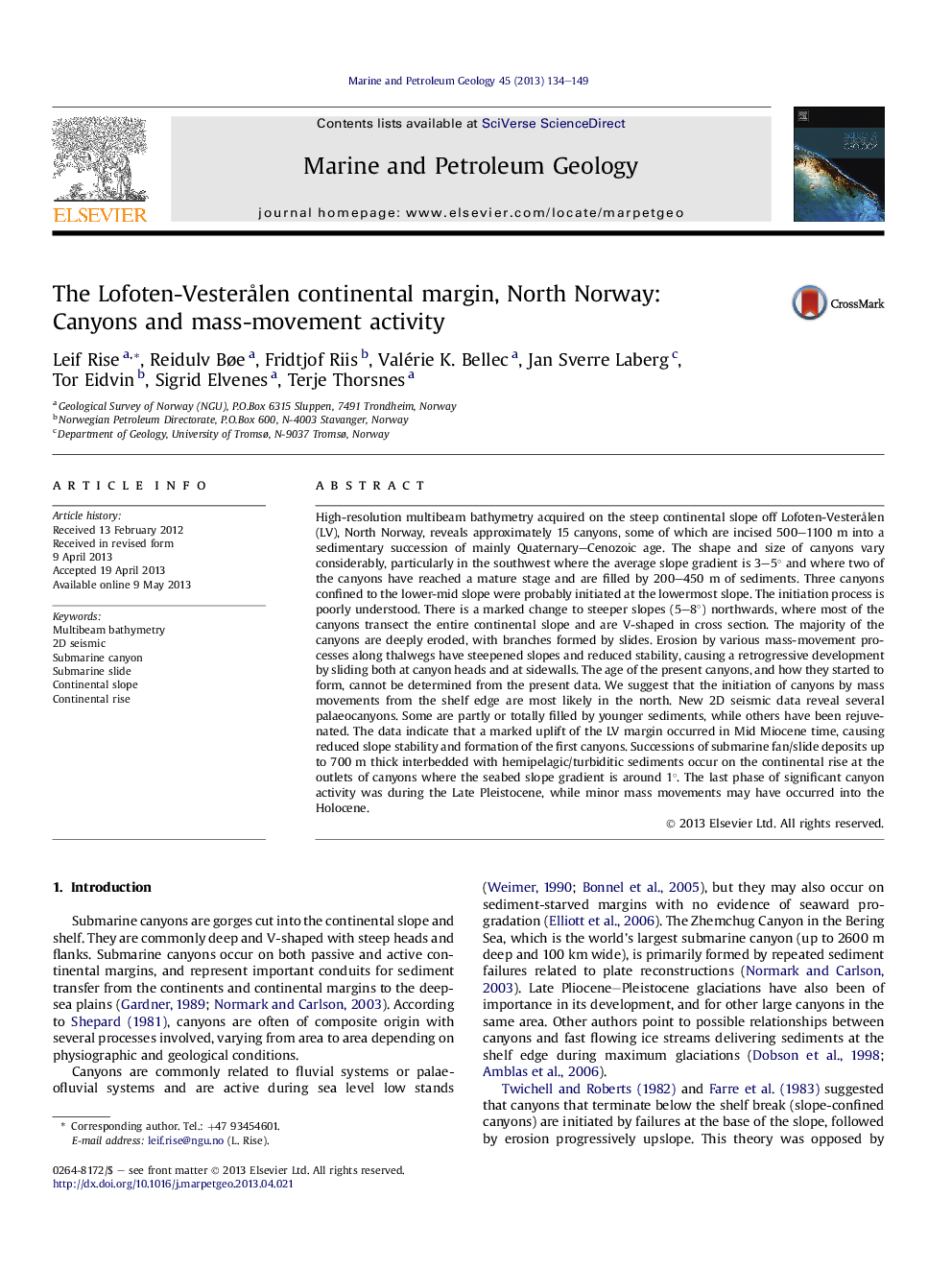| کد مقاله | کد نشریه | سال انتشار | مقاله انگلیسی | نسخه تمام متن |
|---|---|---|---|---|
| 6435485 | 1637179 | 2013 | 16 صفحه PDF | دانلود رایگان |

- Multibeam bathymetry reveals a fascinating canyon landscape beyond the shelf break.
- The majority of canyons transect the entire slope and some are 1000Â m deep.
- 2 D seismic shows palaeo-canyons, possibly indicating uplift in Mid Miocene.
- Slide scars in canyons indicate a bottom-up retrogressive development.
- Significant canyon activity occurred during Quaternary glaciations.
High-resolution multibeam bathymetry acquired on the steep continental slope off Lofoten-Vesterålen (LV), North Norway, reveals approximately 15 canyons, some of which are incised 500-1100 m into a sedimentary succession of mainly Quaternary-Cenozoic age. The shape and size of canyons vary considerably, particularly in the southwest where the average slope gradient is 3-5° and where two of the canyons have reached a mature stage and are filled by 200-450 m of sediments. Three canyons confined to the lower-mid slope were probably initiated at the lowermost slope. The initiation process is poorly understood. There is a marked change to steeper slopes (5-8°) northwards, where most of the canyons transect the entire continental slope and are V-shaped in cross section. The majority of the canyons are deeply eroded, with branches formed by slides. Erosion by various mass-movement processes along thalwegs have steepened slopes and reduced stability, causing a retrogressive development by sliding both at canyon heads and at sidewalls. The age of the present canyons, and how they started to form, cannot be determined from the present data. We suggest that the initiation of canyons by mass movements from the shelf edge are most likely in the north. New 2D seismic data reveal several palaeocanyons. Some are partly or totally filled by younger sediments, while others have been rejuvenated. The data indicate that a marked uplift of the LV margin occurred in Mid Miocene time, causing reduced slope stability and formation of the first canyons. Successions of submarine fan/slide deposits up to 700 m thick interbedded with hemipelagic/turbiditic sediments occur on the continental rise at the outlets of canyons where the seabed slope gradient is around 1°. The last phase of significant canyon activity was during the Late Pleistocene, while minor mass movements may have occurred into the Holocene.
Journal: Marine and Petroleum Geology - Volume 45, August 2013, Pages 134-149